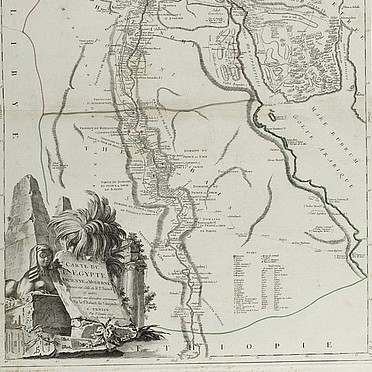"ARCHITECTURE ET PARTIES QUI EN DÉPENDENT", belonging to the "ENCYCLOPEDIA REZONADA DE LAS CIENCIAS, LAS ARTES Y LOS OFICES", edited by Diderot and d'
Lot 143
About Seller
Setdart Auction House
Carrer Aragó 346
Barcelona
Spain
Setdart Subastas was born in 2004 and is currently the first online art auction in Spain with solidity, prestige and reliability guaranteed by our more than 60,000 users. Setdart has a young, dynamic and enterprising team ready to successfully manage the purchase and sale of art works through custom...Read more
Estimate:
EUR€200 - EUR€250
$208.33 - $260.42
Absentee vs Live bid
Two ways to bid:
- Leave a max absentee bid and the platform will bid on your behalf up to your maximum bid during the live auction.
- Bid live during the auction and your bids will be submitted real-time to the auctioneer.
Bid Increments
| Price | Bid Increment |
|---|---|
| EUR€0 | EUR€10 |
| EUR€200 | EUR€25 |
| EUR€500 | EUR€50 |
| EUR€1,000 | EUR€100 |
| EUR€3,000 | EUR€200 |
| EUR€5,000 | EUR€500 |
| EUR€10,000 | EUR€1,000 |
| EUR€20,000 | EUR€2,000 |
| EUR€50,000 | EUR€5,000 |
About Auction
By Setdart Auction House
Sep 30, 2021
Set Reminder
2021-09-30 07:30:00
2021-09-30 07:30:00
America/New_York
Bidsquare
Bidsquare : ANTIQUE CARTOGRAPHY AND ARCHITECTURE PRINTS
https://www.bidsquare.com/auctions/setdart-auction-house/antique-cartography-and-architecture-prints-7542
Setdart Auction House sofia@setdart.com
Setdart Auction House sofia@setdart.com
- Lot Description
"ARCHITECTURE ET PARTIES QUI EN DÉPENDENT", belonging to the "ENCYCLOPEDIA REZONADA DE LAS CIENCIAS, LAS ARTES Y LOS OFICES", edited by Diderot and d'Alembert, second half of the 18th century. "Colonnade of the Louvre". Engraving (double plate). Size: 35.5 x 45 cm (print); 44 x 54.5 cm (paper). The engraving presented here comes from the volume "Architecture et parties qui en dépendent", one of the 28 exceptional volumes that formed the "Encyclopédie, ou dictionnaire raisonné des sciences, des arts et des métiers" (Encyclopédie raisonné des sciences, des arts et des métiers), published in the second half of the 18th century in France under the direction of Denis Diderot and Jean le Rond d'Alembert. Along with the other illustrations, this engraving disseminates the fruits of the knowledge accumulated in architecture up to that time, under the criticism of reason, through plans and elevations of public and private buildings, gadgets and other advances of the time. The Encyclopaedia became a key piece of the Enlightenment, whose ideology exposed the approach with which the different subjects were approached. It was intended to be the compendium of human knowledge, so that it served as a basis for the education and progress of mankind. In its 28 volumes (with 71818 articles and 3129 illustrations) there were topics ranging from the construction of a cathedral to the operation of a clock or the philosophical ideas of Rousseau. Many of these articles were considered radical at the time and generated an intense controversy and the prohibition of the continuity of the publication, although it always had the support of the upper class, among whom we can mention Malesherbes or Madame Pompadour. In 1775, Charles Joseph Panckoucke obtained the rights to republish the work. This publisher published a total of seven volumes of supplementary materials. Some scholars include these seven "extra" volumes as part of the complete first edition of the Encyclopédie, to make a total of 35 volumes, even though they were not written or edited by the original authors. Previously, the Cyclopaedia (Universal Dictionary of the Sciences and Arts), published in 1728 by Ephraim Chambers, as well as Trévoux's Dictionary (1704-1771) composed by the Jesuits, had unveiled interest in this type of publication. In 1745 the bookseller André Le Breton obtained the license to translate Chambers' Cyclopaedia into French, but the incorporation of Diderot and D'Alembert into the project completely changed the project from a simple translation to a monumental new work.
- Shipping Info
-
In-house shipping available. Please inquire at admin@setdart.com.
-
- Buyer's Premium



 EUR
EUR CAD
CAD AUD
AUD GBP
GBP MXN
MXN HKD
HKD CNY
CNY MYR
MYR SEK
SEK SGD
SGD CHF
CHF THB
THB




